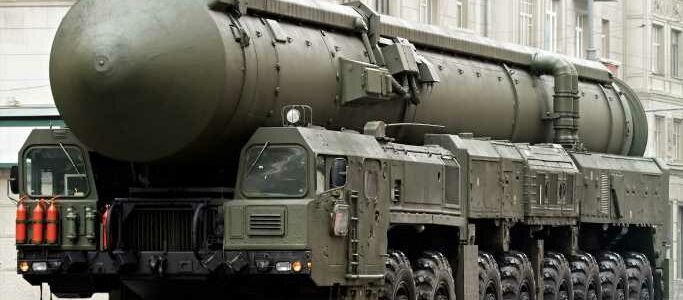
Countries That Control the World’s Nuclear Weapons
Russian leader Vladimir Putin declared on Feb. 27 he was putting his nuclear forces into “special combat readiness” amid the global outcry over Russia’s invasion of Ukraine. The move was evocative of the worst moments during the Cold War. (These are the 14 former Soviet republics that joined NATO after the Cold War.)
Putin’s move to rattle his nuclear sword is a reminder that at least nine nations possess the most dangerous weapons ever developed, enough power to raze entire regions of the world and destroy nations.
Though the Cold War ended in 1989, several countries continue to develop nuclear arms capabilities. Russia is completing a decades-long effort to modernize its nuclear weapons systems, while the United States deployed 8-kiloton nuclear submarine-launched ballistic missiles as recently as 2019, according to the Bulletin of Atomic Scientists. China, India, and Pakistan are expanding their nuclear weapons capabilities, and Iran may be secretly developing its own nuclear weapons program. (These are the countries with the largest militaries.)
To determine the status of the world’s nuclear powers, 24/7 Wall St. reviewed warhead inventories for each country using estimates from the Federation of American Scientists, an organization that works to reduce the spread of nuclear weapons and increase government transparency. All other data comes from The Stockholm International Peace Research Institute.
Nuclear weapons vary in potency, ranging from small tactical nuclear devices to intercontinental ballistic missiles that can yield up to 800 kilotons, or about 44 times the power of the two nuclear bombs dropped on Hiroshima and Nagasaki in 1945. The smallest nuclear weapon system ever built was the American M28 and M29 (aka the Davy Crocket), with a yield of about 0.02 kilotons, equivalent to 20 tons of TNT.
The United States and Russia continue to maintain the most nuclear weapons, far more than the other seven nuclear powers combined. Fortunately, the number of nuclear weapons has declined significantly from its peak years prior to the end of the Cold War thanks in part to the Strategic Arms Reduction Treaty and the New START, which extended the treaty to 2026, between the U.S. and Russia. But plenty of nuclear firepower remains.
Here is the status of the world’s nine nuclear arsenals
Click here to read our detailed methodology
Source: Read Full Article